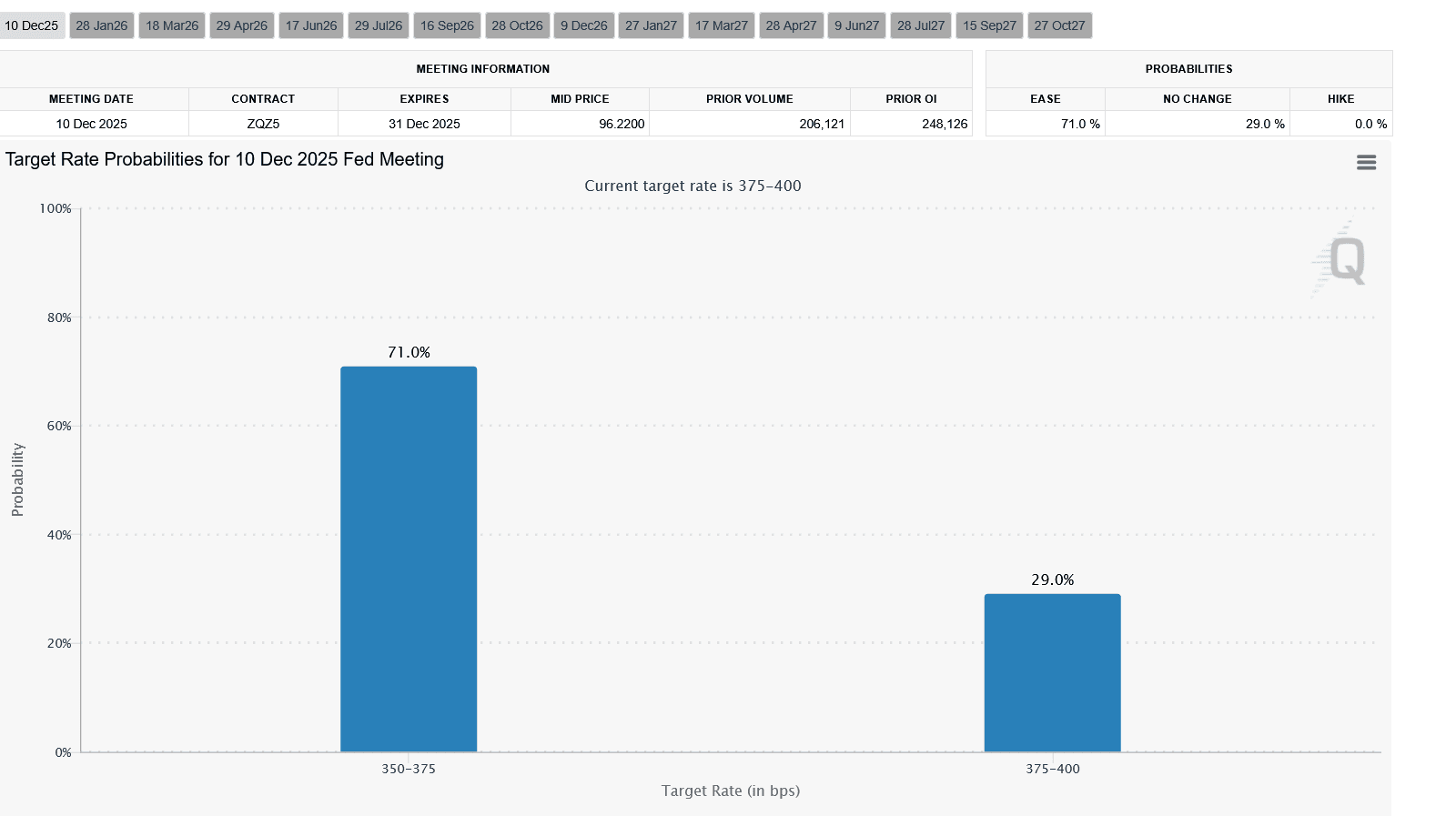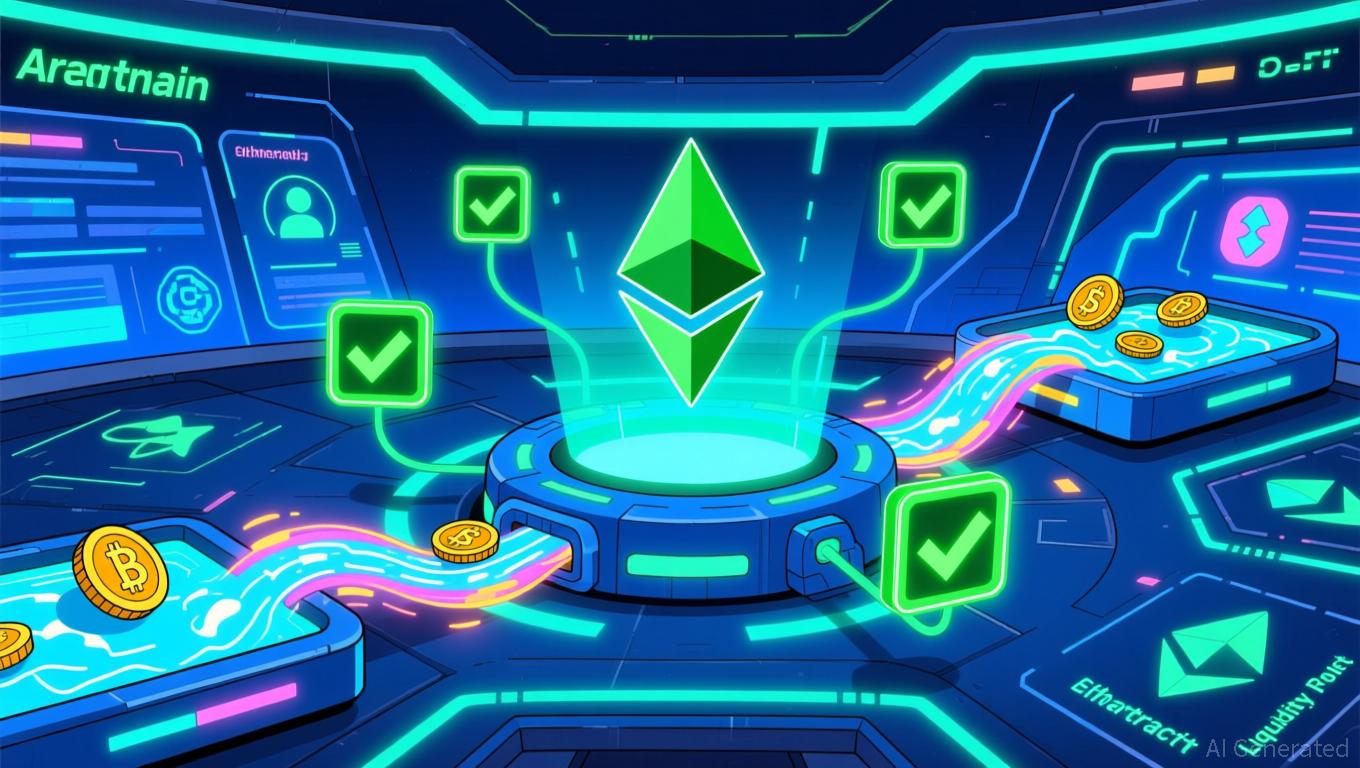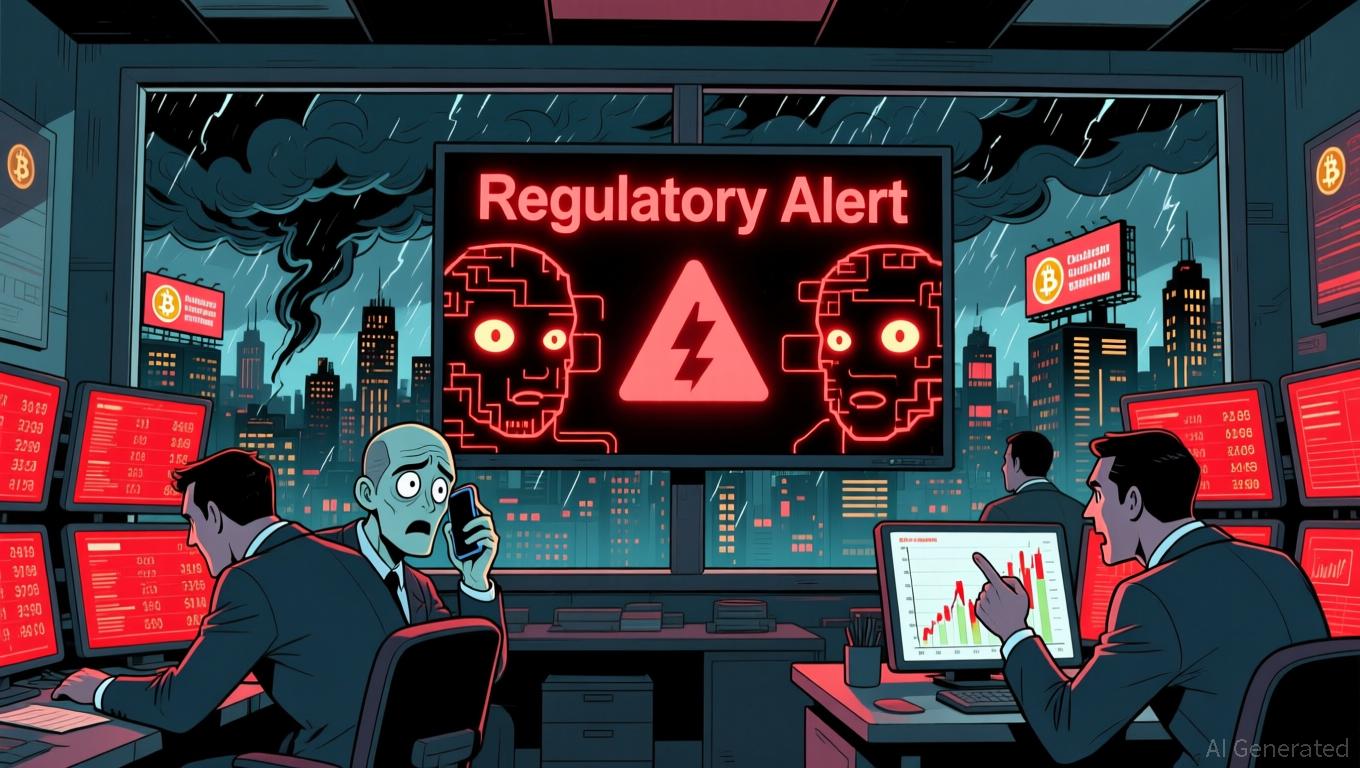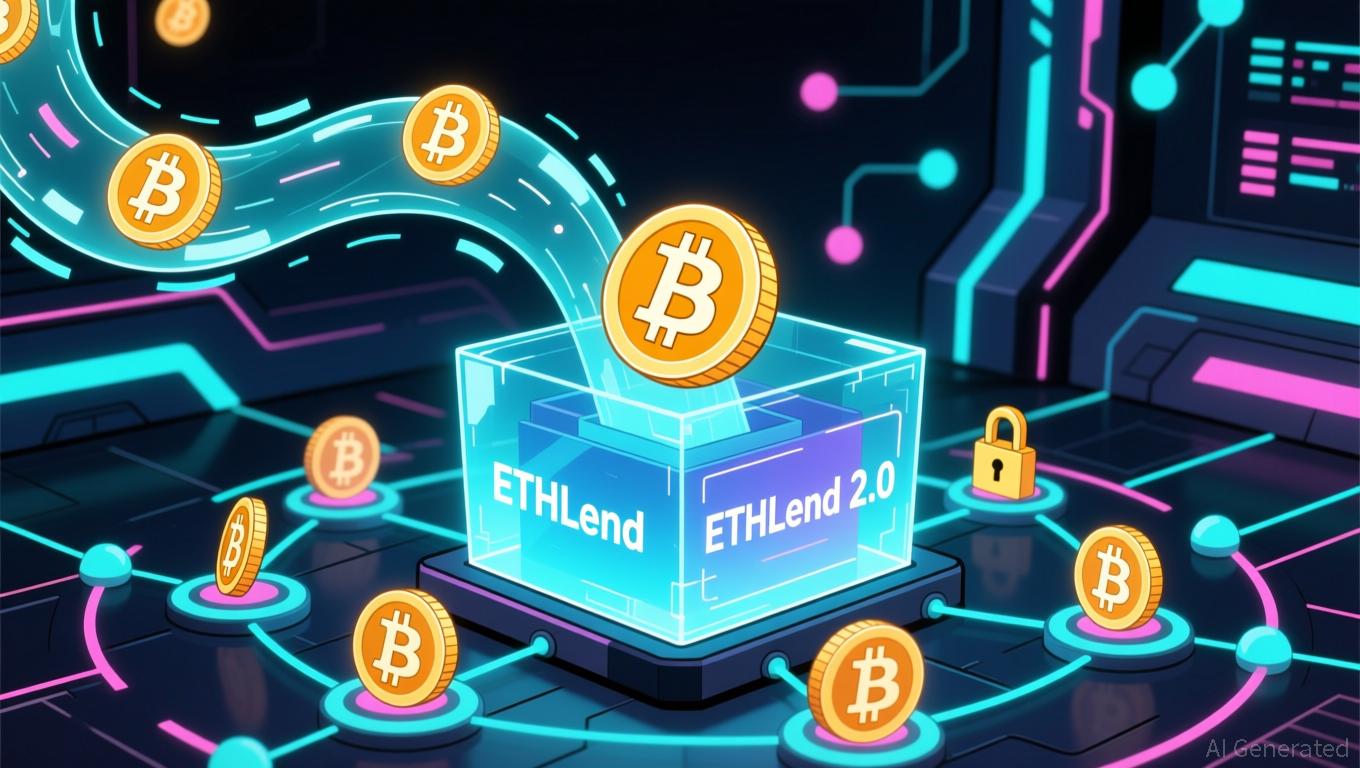The Rapid Rise of ZK Technology and What It Means for Cryptocurrency Markets
- ZK proof ecosystems saw 2025 breakthroughs in scalability, institutional adoption, and on-chain activity, reshaping blockchain infrastructure and crypto markets. - Projects like zkSync Era (27M+ monthly txns) and StarkNet (tripled TVL) demonstrated ZK-rollups' capacity to handle 15,000+ TPS, accelerating Ethereum's Layer 2 dominance. - Institutional giants including Deutsche Bank , Sony , and Nike integrated ZKP solutions for compliance, with Polygon securing $1B+ in ZKP development funding. - ZKP market
Scalability Innovations:
ZK
as the Catalyst for Mass Adoption
Zero-knowledge rollups (ZK-rollups) and zkEVMs have become essential to scaling blockchain networks. For example, zkSync Era, a prominent ZK-rollup, currently
The emergence of Layer 3 (L3) blockchains is further enhancing scalability. Built on top of Layers 1 and 2, these platforms have demonstrated the capacity to process as many as 12,000 TPS in practical tests and are
Institutional Adoption: From Skepticism to Strategic Integration
In 2025, institutional interest in ZK technology has surged, with leading organizations adopting ZKP-based solutions to enhance compliance and operational efficiency. Polygon, for instance, has allocated over $1 billion to ZKP research and development, establishing its zkEVM as a foundational tool for business and institutional applications. This commitment has drawn major collaborators such as Nike, which is
The traditional finance sector is also turning to ZK proofs. Deutsche Bank and Sony have
On-Chain Activity and Market Projections: A New Era of Growth
Key financial indicators for ZK-based platforms highlight their expanding impact. The total value locked (TVL) in ZK rollups has
Layer 3 blockchains are accelerating this momentum. Their demonstrated ability to process
Investment Implications: Navigating the ZK-Driven Paradigm Shift
For those investing in this space, the rapid evolution of ZK technology brings both significant prospects and notable risks. Projects that have managed to scale ZK-rollups or secure major institutional alliances—such as zkSync Era, StarkNet, and Polygon—are in a strong position to gain market traction as the sector evolves. Nevertheless, the industry’s inherent volatility and technical sophistication require a prudent, research-based investment strategy.
The adoption of ZK proofs by traditional financial and enterprise systems also marks a broader move toward mainstream blockchain acceptance. As seen with Deutsche Bank and Sony, ZK’s unique ability to blend privacy with regulatory compliance is transforming institutional engagement. This momentum is expected to build in 2026, with more established companies exploring ZKP-based solutions for international payments, supply chain tracking, and identity management.
To sum up, the explosive growth of ZK technology represents a fundamental evolution in blockchain infrastructure rather than a passing trend. As scalability challenges are resolved and institutional confidence grows, ZK-powered networks are set to underpin the next wave of financial and digital innovation. For investors, the focus should be on identifying projects that merge technical excellence with tangible real-world applications—a benchmark that the leading ZK platforms are increasingly achieving.
Disclaimer: The content of this article solely reflects the author's opinion and does not represent the platform in any capacity. This article is not intended to serve as a reference for making investment decisions.
You may also like
Will DOGE Price Crash to $0?

Why is MUTM's DeFi approach drawing in $18.9 million and 18,000 investors in 2025
- Mutuum Finance (MUTM) has raised $18.9M from 18,200 investors via a 250% presale price surge to $0.035 in Phase 6. - Its dual-lending model combines peer-to-contract and peer-to-peer mechanisms to optimize liquidity and capital efficiency. - Phase 6 nearing 99% completion highlights demand for MUTM's automated, intermediary-free lending via Ethereum-based smart contracts. - The project plans Q4 2025 launch of its public lending protocol on Sepolia testnet, emphasizing transparent decentralized ownership.

Global authorities suspend the growth of Biometric Blockchain due to worries about data privacy
- Worldcoin (WLD) fell 14% amid regulatory crackdowns, token unlocks, and market weakness, outperforming crypto's 9% decline. - Colombia, Philippines, and Thailand ordered operations halted and biometric data deleted over privacy concerns. - 37M WLD tokens ($25M) unlocked recently, worsening sell pressure as price consolidates near $0.63 resistance. - Analysts predict $0.75–$0.85 by 2025 if regulations clarify, but warn of potential drops to $0.26 amid unresolved compliance risks. - Project's viability hin

Bitcoin News Update: Aave's ETHLend 2.0 Disrupts DeFi's Dependence on Wrapped Tokens by Introducing Native Bitcoin
- Aave founder Stani Kulechov announced ETHLend 2.0's 2026 relaunch using native Bitcoin as collateral, diverging from wrapped tokens. - The hybrid P2P-liquidity pool model aims to enhance DeFi efficiency while reducing synthetic asset reliance through cross-chain BTC integration. - This revival aligns with growing institutional demand for non-wrapped BTC and could restore utility for the legacy LEND token. - Despite bearish market conditions, the move signals confidence in Bitcoin's foundational role for
